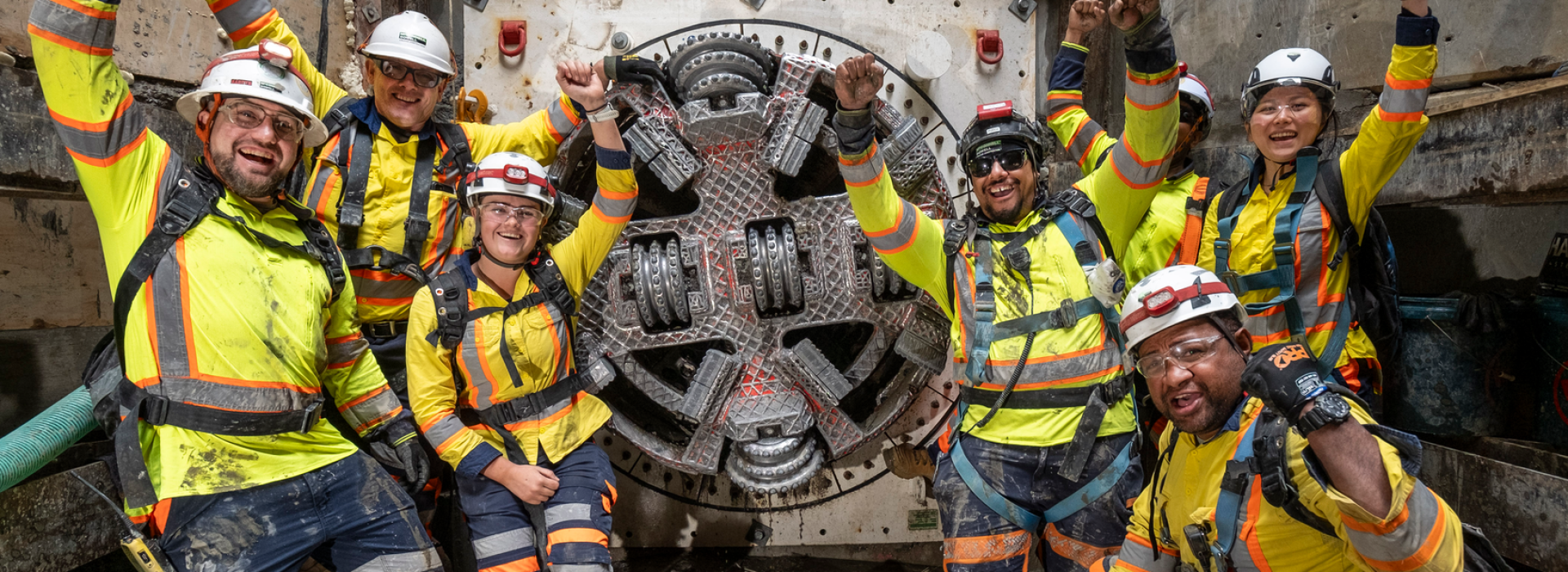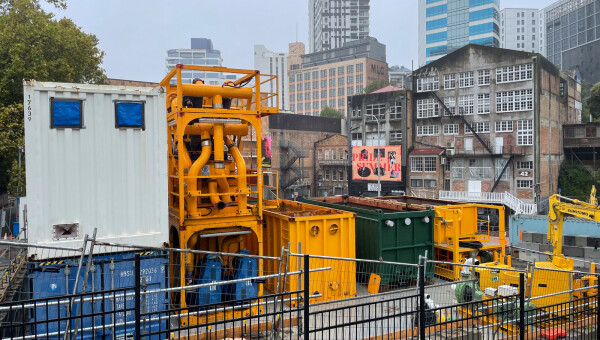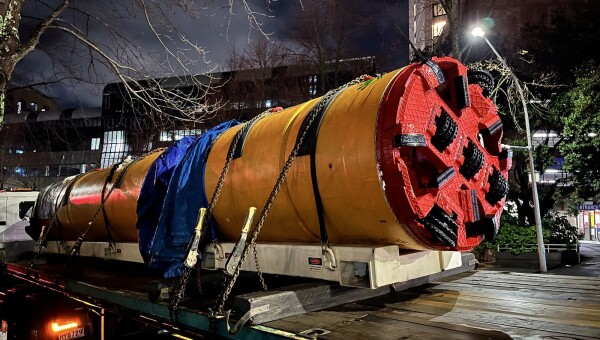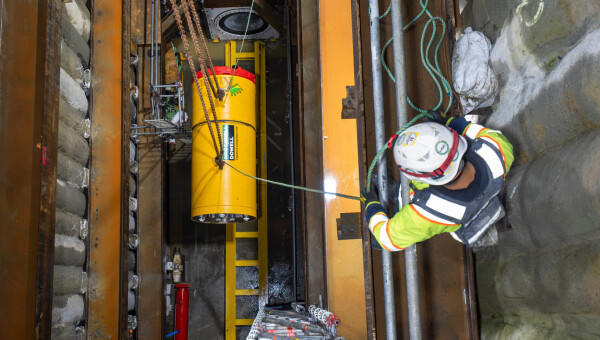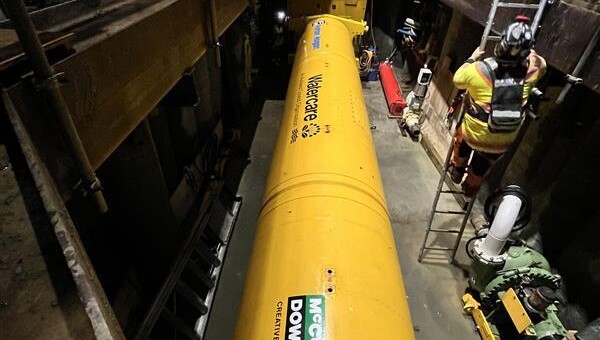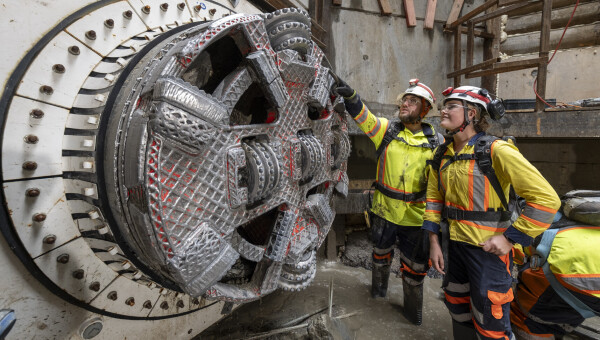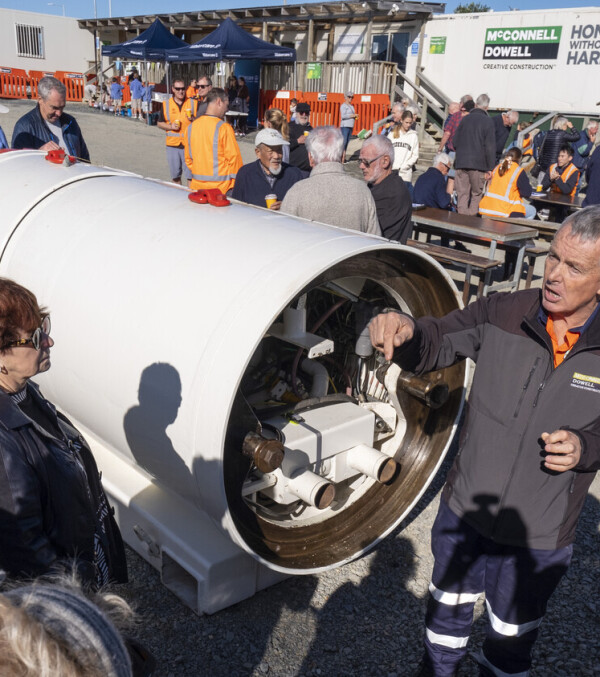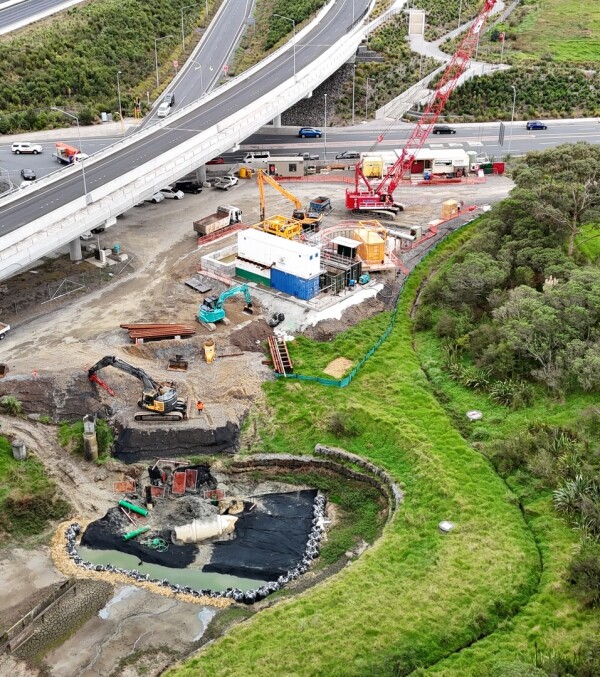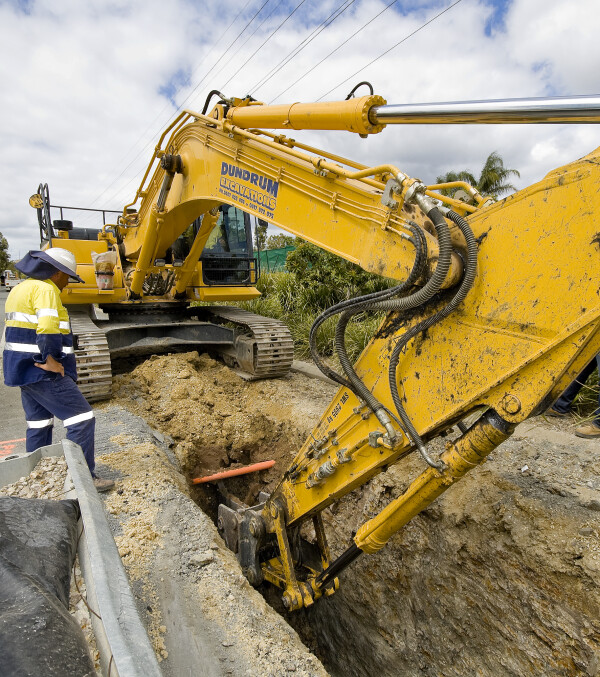|
Customer: Watercare Services Ltd Contract: Construct Location: Queen Street, Auckland |
Fast Facts:
|
Our brand-new micro-Tunnel Boring Machine (mTBM) is pipe jacking a new 1229 mm diameter Glass Reinforced Plastic (GRP) wastewater pipeline beneath Queens Street, Auckland, New Zealand.
The new 570-metre-long wastewater pipeline is being constructed for Watercare by lead contractor Fulton Hogan, and we’re contracted to deliver the tunnelling for the project.
The key benefit of pipejacking is that the work is done underground via three small shafts, rather than trenches in the busy central city. But the project team has also designed the temporary works and methods to minimise the impact of work, critical for infrastructure projects being built downtown
A brand new Herrenknecht micro-Tunnel Boring Machine (mTBM) is excavating the tunnel and installing the new pipeline. It is remotely controlled from above ground, using sensors and lasers to navigate underground. A slurry system is set up to lubricate the cutterhead and remove material excavated at the front of the machine. The separation plant that processes this ‘slurry’ into spoil and water is set up off Mayoral Drive.
Clever Shaft Design
The shafts were designed to be small and efficient, costing less to build and taking up less space in the road. The single pipe installation method is also faster, halving the programme and traffic management.
The mTBM is 16.6 metres long when assembled, so a staged installation was planned..The team designed the Mayoral Drive shaft to be 11 m long, five metres wide, and as small as possible to reduce disruption.
The first three sections or ‘cans’ (shown in the photo gallery below) were lowered into place and connected. This first section tunnelled forward so the remaining 7.6 metres could be lowered into place behind it and connected. The plan shortened the shaft by six metres, maintaining more space for the public and traffic.
Single pipe solution
Glass Reinforced Plastic (GRP) pipes are strong, designed specifically for wastewater, they’re durable, corrosion-resistant, and can withstand the high pressures required for pipejacking. These qualities make them ideal as a ‘single pipe’ solution.
Traditional tunnelling uses a two-pipe system; reinforced concrete jacking pipes create the tunnel, and a smaller diameter service pipeline suitable to carry the wastewater is installed inside and grouted into place. GRP pipes do the work of both reinforced concrete and plastic pipes, making them a cost-effective option.
Scope
Main contractor Fulton Hogan is leading the project’s two stages, and they began the first stage constructing the shafts in late 2024. McConnell Dowell started the tunnelling for the new pipeline in mid-2025.
The 580 m long wastewater pipe is being tunnelled seven to 14 metres under Queen Street crossing west to the east along its journey. The first 353 m drive from a shaft at the corner of Queen Street and Mayoral Drive to one on Wellesley Street was completed in September.
At the Wellesley Street shaft, the mTBM was serviced, and its old cutterhead was replaced for the next drive through hard basalt. The last 217 m drive from Wellesley to Victoria Street East was completed in mid-October 2025.
This shaft is where the new pipeline will be connected to the existing Ōrākei sewer main, transporting wastewater flows away from the city.
Stage Two of the project is currently being planned, and it aims to extend the pipeline west under Mayoral Drive to Greys Ave and Vincent Street.
The project will increase capacity, improve the resilience of the wastewater network, allow for future population growth, and reduce wastewater overflows for a cleaner Waitematā Harbour. It is part of Watercare's 10-year $13.8B infrastructure upgrade programme.
Caption: The team before the successful launch of the TBM (left to right): Glen Hughes, Api Nagado, Alex Johnson (Watercare), Farjay Lau, Martin Perry, Steve Jones, Paul Hague, Michael Brown, Aimee Blackmore, Alvin I Buan, and Dean Carter.

Watch our mTBM complete the first drive of the project...

